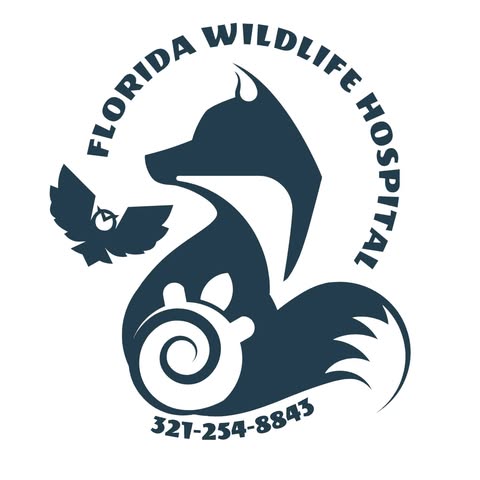
Sunshine Haven Wildlife Rehabilitation – 951 588 8811
272017412
Riverside, CA 92503-6254 USA
sunshinehavenwildlife.com
sunshinehaven
Podobné organizace
Podobné organizace global
THE WILDLIFE HAVEN RESCUE AND REHABILITATION CENTRE |
|
WILDLIFE HAVEN REHABILITATION CENTRE INC. |
|
INTERIOR WILDLIFE REHABILITATION SOCIETY |
|
Help for Wildlife Ltd |
|
REACH OUT WILDLIFE LTD |
Podobně sociální sítě (13000)
ForDogs z. s.14000 |
|
Mezipatra z.s.14000 |
|
KOKOZA, o.p.s.14000 |
|
Iniciativa Dokořán, z. s.14000 |
|
Nadace Vodafone Česká republika13711 |
Novinky

Let's have a moment of silence to honor all the animals who lost their lives in the fires. The Palisades and Eaton Fires have a profound impact on local wildlife in Los Angeles County, particularly in the Santa Monica Mountains, which are home to a huge and diverse ecosystem. Habitat Destruction Acres Burned: Almost 40,000 acres of habitat were destroyed, affecting significant portions of the natural landscape where numerous species live. Loss of Vegetation: The fire consumed large swathes of vegetation, which is critical for food, shelter, and breeding for many animals. This includes both the native chaparral and oak woodlands, essential habitats for species like deer, bobcats, and various bird species. Specific Species Impacted Mountain Lions: There were sightings of a mountain lion and her kittens fleeing the fire, indicating the immediate threat to these predators. The Santa Monica Mountains are known for the small population of these big cats, and the fires displace and/or harm them significantly. Birds: Various bird species, including hawks and condors, face habitat loss. The fires have reduced nesting sites and food availability, impacting their survival and reproduction. Small Mammals: Species like raccoons, opossums, squirrels, and rabbits needed to flee or face direct harm from the fire. Their burrows and nesting sites are likely destroyed, affecting their population dynamics. Secondary Effects Increased Vulnerability: After the fire, animals are more exposed to predation, starvation, or dehydration due to the lack of cover and food resources. They also will be displaced, thus increasing risks of vehicular impact on the roads. Debris Flows: Post-fire, the risk of mudslides and debris flows increases, further impacting habitats and potentially sealing off escape routes or burying food sources. Water Quality: Fires leads to ash and sediment runoff into water bodies, affecting aquatic life and water-dependent species. Long-term Consequences Ecosystem Recovery: Recovery of the ecosystem will depend on the regeneration of plant species, which can take years or even decades. Some species might benefit from the new growth post-fire, but many will face challenges in the altered landscape. Species Displacement: Animals will move into human-populated areas, increasing human-wildlife conflicts and leading to higher roadkill rates as they seek new territories. Mitigation and Recovery Efforts Habitat Restoration: Long-term habitat restoration projects will be crucial, involving reforestation, soil stabilization, and protection of regrowing areas from further disturbances. The Palisades and Eaton Fire serve as a stark reminder of how wildfires can drastically alter wildlife habitats, affecting species survival and local biodiversity. The immediate and long-term impacts necessitate ongoing monitoring and conservation efforts to aid in the recovery of these affected ecosystems. We appreciate your ongoing support with what we do at Sunshine Haven Wildlife Rehabilitation! THANK YOU, from all of us! ❤️ (fb)

Let's have a moment of silence to honor all the animals who lost their lives in the fires. The Palisades and Eaton Fires have a profound impact on local wildlife in Los Angeles County, particularly in the Santa Monica Mountains, which are home to a huge and diverse ecosystem. Habitat Destruction Acres Burned: Almost 40,000 acres of habitat were destroyed, affecting significant portions of the natural landscape where numerous species live. Loss of Vegetation: The fire consumed large swathes of vegetation, which is critical for food, shelter, and breeding for many animals. This includes both the native chaparral and oak woodlands, essential habitats for species like deer, bobcats, and various bird species. Specific Species Impacted Mountain Lions: There were sightings of a mountain lion and her kittens fleeing the fire, indicating the immediate threat to these predators. The Santa Monica Mountains are known for the small population of these big cats, and the fires displace and/or harm them significantly. Birds: Various bird species, including hawks and condors, face habitat loss. The fires have reduced nesting sites and food availability, impacting their survival and reproduction. Small Mammals: Species like raccoons, opossums, squirrels, and rabbits needed to flee or face direct harm from the fire. Their burrows and nesting sites are likely destroyed, affecting their population dynamics. Secondary Effects Increased Vulnerability: After the fire, animals are more exposed to predation, starvation, or dehydration due to the lack of cover and food resources. They also will be displaced, thus increasing risks of vehicular impact on the roads. Debris Flows: Post-fire, the risk of mudslides and debris flows increases, further impacting habitats and potentially sealing off escape routes or burying food sources. Water Quality: Fires leads to ash and sediment runoff into water bodies, affecting aquatic life and water-dependent species. Long-term Consequences Ecosystem Recovery: Recovery of the ecosystem will depend on the regeneration of plant species, which can take years or even decades. Some species might benefit from the new growth post-fire, but many will face challenges in the altered landscape. Species Displacement: Animals will move into human-populated areas, increasing human-wildlife conflicts and leading to higher roadkill rates as they seek new territories. Mitigation and Recovery Efforts Habitat Restoration: Long-term habitat restoration projects will be crucial, involving reforestation, soil stabilization, and protection of regrowing areas from further disturbances. The Palisades and Eaton Fire serve as a stark reminder of how wildfires can drastically alter wildlife habitats, affecting species survival and local biodiversity. The immediate and long-term impacts necessitate ongoing monitoring and conservation efforts to aid in the recovery of these affected ecosystems. We appreciate your ongoing support with what we do at Sunshine Haven Wildlife Rehabilitation! THANK YOU, from all of us! ❤️ (fb)

Poslední komentáře
❤️ So excited to hear about the new location! Looking forward to seeing Sunshine Haven back in action and helping more wildlife. Let's all support this amazing cause! 🦋🌟detail |
|
🌍 Thank you for the incredible work you do for our community and wildlife! Can’t wait to see the new facility and how it helps more animals in need. Keep up the great work! 🙌🐾detail |
Poslední diskuze
1. What strategies can we implement to enhance public education on zoonotic diseases and their prevention in local communities?Odpovědí: 3, Naposledy před 1 den detail |
|
2. How can law enforcement agencies better collaborate with wildlife rehabilitation centers to address wildlife conflict issues effectively?Odpovědí: 3, Naposledy před 1 den detail |
V okolí
4.5
Riverside
O společnosti
- 951, D30, D40, D34 -
Public Education WILDLIFE HOSPITAL WE ARE TEMPORARILY CLOSED. STAY TUNED FOR OUR NEW LOCATION COMING SOON. Meanwhile Leslie at The Pond Digger will be assisting you. Call 909 8007676 We are in the process of land acquisition as well as acquiring a new building for our facilities.
Ochrana/Ochrana volně žijících zvířat Veterinární služby Přírodní rezervace/Zvířecí útulek



















